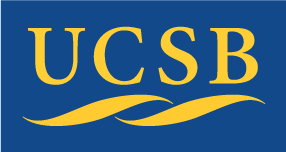|
Geometry, Topology, and Physics Seminar, Fall 2011
Part of the NSF/UCSB ‘Research Training Group’ in Topology and Geometry
Organizer:
Dave Morrison.
Meets 4:00 - 5:30 p.m. on selected Fridays in South Hall 6635.
Other Quarters: [
Fall, 2021;
Winter, 2020;
Fall, 2019;
Spring, 2018;
Winter, 2018;
Fall, 2017;
Spring, 2017;
Wnter, 2017;
Fall, 2016;
Spring, 2016;
Winter, 2016;
Fall, 2015;
Spring, 2015;
Winter, 2014;
Fall, 2013;
Fall, 2012;
Fall, 2011;
Winter, 2011;
Spring, 2010;
Winter, 2010;
Fall, 2009;
Spring, 2009;
Winter, 2009;
Fall, 2008;
Spring, 2008;
Winter, 2008;
Fall, 2007;
Spring, 2007;
Winter, 2007;
Fall, 2006
]
| Sep. 30 |
Dave Morrison (UCSB)
Abstract:
During the past two and a half years, much new progress has been made in studying supersymmetric gauge field theories by using techniques from low-dimensional topology. The starting point from the physics side is a class of mysterious physical theories in 6 dimensions with maximal supersymmetry, which should lead to supersymmetric gauge theories in 4 dimensions or 3 dimensions if appropriately "compactified." The "compactification" involves a 2-manifold or a 3-manifold, respectively, and the topology and geometry of these compactification spaces turns out to be closely related to the physics. For example, with Drukker and Okuda I found a close connection between a result in 2-manifold topology called the Dehn-Thurston theorem and certain aspects of 4-dimensional supersymmetric gauge theories. Much work has been done on the case of 2-manifolds (Riemann surfaces) and gauge theories in 4 dimensions; more recently, work has begun on 3-manifolds and theories in 3 dimensions.
We will have a series of lectures on this general topic this quarter (perhaps continuing into next quarter); this first lecture will be introductory. I will sketch the key idea: cut the compactifying manifold into simple pieces which can be described geometrically, and learn how both the pieces and the gluing data for reassembling pieces can be interpreted in both mathematics and physics.
For an introductory reference, see: Gauge Theories Labelled by Three-Manifolds by Tudor Dimofte, Davide Gaiotto and Sergei Gukov,
arXiv:1108.4389 [hep-th].
Audio [ mp3,
wma ];
Lecture
notes.
|
| Oct. 7 |
No meeting
|
| Oct. 14 |
Daryl Cooper (UCSB)
Abstract:
In dimensions 2 and 3 hyperbolic manifolds can be "triangulated"
with ideal simplices whose vertices are at infinity. The situation is a bit subtle
since the union of these simplices omits a certain subset of the manifold of
measure zero. This subset is a geodesic lamination, a generalization of the
idea of finite closed (periodic) geodesic. In dimension 2 there is only one
shape of ideal 2-simplex (triangle) and there are parameters that describe
how these are "glued" giving a parameterization of Teichmuller space.
In dimension 3 an ideal 3-simplex (tetrahedron) has shape which is a
complex number and these must satisfy certain glueing equations:
one per edge of the triangulation. These are related to ideas of
Fock and Goncharov for studying higher Teichmuller spaces,
and triangulations are used by Dimofte, Gaiotto and Gukov to
construct Gauge theories.
Audio [ mp3,
wma ];
Slides.
|
| Oct. 21 |
The seminar will not meet today, so that everyone can
attend the RTG seminar at 3:30
Zhenghan Wang (Microsoft Station Q)
Abstract:
Motivated by application to quantum computing, we will discuss theoretical modeling and mathematical classification of topological phases of matter. Topological quantum systems are closely related to unitary stable topological quantum field theories. While a general classification is difficult, progress has been made for (2+1)-dimension and short-ranged entangled states. In particular, non-interacting fermion topological quantum systems can be classified completely via K-theory by A. Kitaev.
Audio [ mp3,
wma ];
Slides.
|
| Oct. 28 |
Dave Morrison (UCSB)
Abstract:
We will discuss various operations on three-dimensional supersymmetric
quantum field theories which are parallel to features of the decomposition
of a three-manifold into ideal hyperbolic simplices. The discussion will
include extensive background information on these three-dimensional
field theories, in hopes of making the discussion accessible to
mathematicians as well as physicists.
The first two operations,
called
$S$ and $T$,
were discussed by Witten for 3D conformal
field theories with a $U(1)$ flavor symmetry, and together give an
$SL(2,\mathbb{Z})$
action on the space of such theories.
The other "operation" is known as mirror symmetry for 3D theories: like
the more familiar mirror symmetry in 2D, it exchanges certain parts of
the moduli spaces when passing from one theory to its mirror dual.
Audio [ mp3,
wma ];
Lecture
notes.
|
| Nov. 4 |
No meeting
|
| Nov. 11 |
Veteran's Day holiday.
|
| Nov. 18 |
Daryl Cooper (UCSB)
Abstract:
We will describe some examples of triangulations of hyperbolic
3-manifolds
using ideal simplices (vertices on the light cone) and the resulting
gluing equations
that give a hyperbolic structure. Followed by a description of
the Pachner moves which enable one to move between different triangulations.
Audio [ mp3,
wma ];
Slides;
other notes.
|
| Dec. 2 |
Postponed until next week
|
| Dec. 9 |
Postponed until Winter Quarter
|
|
|



